Anatomy of the Articulatory and Resonance Systems (Last Exam)
1/66
There's no tags or description
Looks like no tags are added yet.
Name | Mastery | Learn | Test | Matching | Spaced |
|---|
No study sessions yet.
67 Terms
articulation
the pronouncing of words, the manner in which they are produced, the process of joining 2 things together moving speech structures in speech sound production
oral cavity, nasal cavity, and pharyngeal cavity
articulation occurs within the vocal tract which is made up of?
articulation
adjustments to the shape of the vocal tract (and thus acoustical properties) and is a time-sensitive process
articulators
the structures that you join or adjust (can be mobile or immobile)
they can generate speech sounds
vocal tract
a 17 cm tube; area and structures where articulation occurs
structures include: cavities above the larynx, pharynx, oral cavities, and nasal cavities (sinus)
like a bent tube
what is the vocal tract shaped like?
when you move an articulator
when does the vocal tract move?
airflow
the articulators form valves that act to resist _____ which creates different types of sounds
biological role of the vocal tract
is the primary role
is a passageway for 2 systems (for air which is how we breath and for food for eating which creates saliva to break down food)
non-biological role of the vocal tract
is the speech role (which is not necessary for survival)
it modifies the resonatory characteristics and generate speech sounds and is a series of valves to change/constrict the flow or air
bones of the cranium
frontal, ethmoid, sphenoid, temporal, parietal, and occipital bones
bones of the facial skeleton
mandible (jawbone), maxillae, nasal bones, palatine bones, lacrimal bones, zygomatic bones (cheek bones), inferior conchae, and vomer
mandible
appears u-shaped, largest and strongest facial bone, and contributes to speech, 1 of them
houses and supports lower teeth, forms point of attachment for tongue and other musculature, and minimal jaw movement during speech
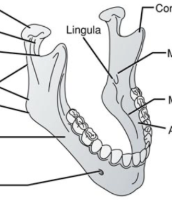
maxillae
upper jaw, second largest facial bone, and major speech contribution, 2 of them
bounds to the mouth, attaches muscles and soft tissues important for speech, and makes up the hard palate, nose, and upper dental ridge
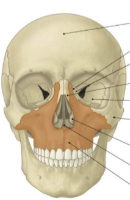
nasal bones
forms bridge of the nose

lacrimal bones
form part of medial wall of orbital cavities

palatine bones
contribute to the formation of three cavities
floor and lateral walls of nasal cavity
posterior roof of mouth of oral cavity (1/4 of hard palate posteriorly)
floor of orbital cavity
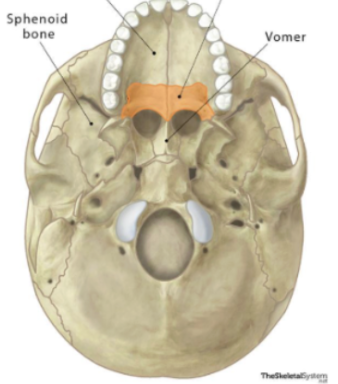
zygomatic bones
contributes to the later wall and floor of orbital cavity
cheekbones
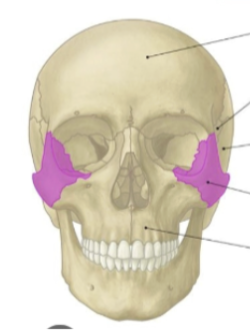
inferior nasal conchae
inferior turbinates
make up the inferior-most part of the lateral nasal wall
vomer bone
inferior half of the bony nasal septum (separates nasal cavities into left and right)
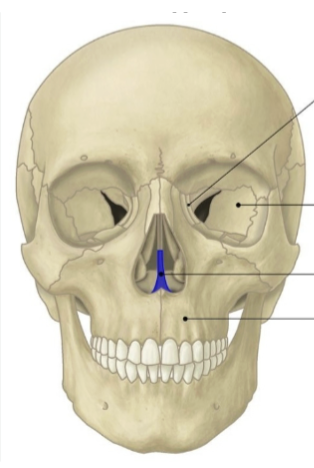
sinuses
mucus-lined spaces within bone that drain into the nasal cavity
includes frontal, maxillary, ethmoid, and sphenoid
purpose of sinuses
provides better balance for skull (lighter in weight)
act as resonating chambers (in addition to oral/nasal cavities)
expands areas served by nose in warming, moistening, and filtering incoming air
structures involved in articulation
lips, cheeks, teeth, tongue, mandible, palate, pharynx, fauces/facial pillars, and uvula
lips
also known as rima oris, is the mouth opening and has both and upper and lower part
labial frenula (frenulum)
thin connective tissue inside lips
nasal philtrum
produces bilabial (/p/ and /b/), labiodental (/f/ and /v/) sounds
oral preparatory and oral phase of swallowing
cheeks
assist in various speech sounds and assists during chewing, swallowing (maintain the pressure within oral cavity)
joints
two structures meet
dentition
20 deciduous teeth (baby teeth)
28-32 permanent teeth
cycles of life for teeth
growth phase, calcification, eruption, and attrition
growth phase
phase where there is teeth formation
calcification
phases where teeth are strengthened to build tooth enamel
eruption
phase where movement of the tooth goes to its functional position
attrition
phase where there is tooth loss
types of teeth
incisors, canines, premolars, and molars
incisors
are the central most teeth for biting into food
canines
are also called cuspids
help you bite foods like meat and crunchy vegetables
premolars
are also called bicuspids
are for grinding food into smaller pieces
molars
are for grinding food and moving it further to swallow
class I
normal occlusion
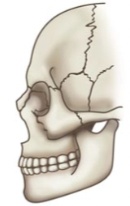
class I malocclusion
upper and lower jaw align, but teeth do not touch when closed, “open bite”
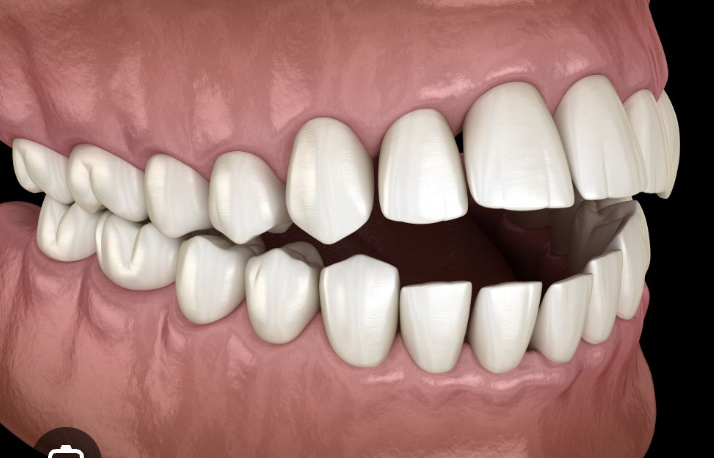
class II malocclusion
increased overjet; appearance of receding chin and decrease in lower facial height, “overbite”
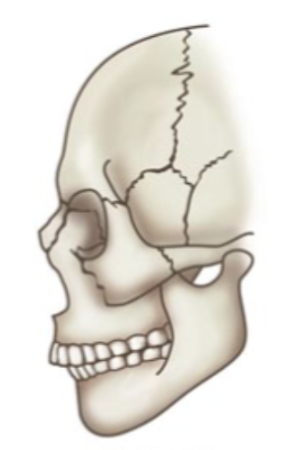
class III malocclusion
increased facial height, “underbite”
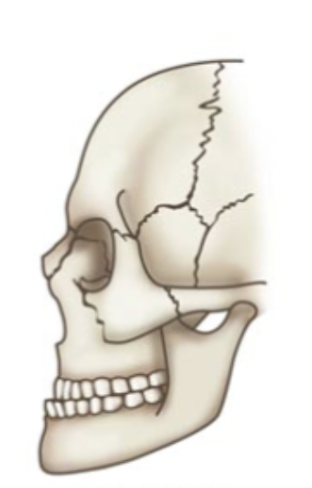
tongue
almost entirely muscular
3 biological functions: taste sensation, mastication, and deglutition
nonbiological function: articulation
deglutition
swallowing
divisions of the tongue
tip - anterior most
blade - below alveolar ridge
dorsum - body along superior surface
root - anchor to epiglottis and hyoid
papillae
taste receptors on the tongue
are tiny raised protrusions on the tongue that contain taste buds
mandible
never completely opens during speech
only true moveable bone in the face
primary movements are depression and elevation, but also protrusion/retraction/lateralization
function is for chewing and holds the lower teeth and provides a wide range of movements
temporomandibular joint (TMJ)
is the joint between the mandible and the temporal bone
covered by fibrocartilage
disturbance may be the result or cause of malocclusion
palate
the roof of the mouth
includes hard and soft
hard palate
formed by palatine processes of the maxillae and palatine bones, is the bony front portion of the roof of the mouth that separates the oral and nasal cavities
palatine rugae
are the irregular ridges located on the anterior portion of the hard palate
midline raphe
midline ridge or seam on the hard palate, extending from the incisive papilla to the uvula
soft palate
a muscular flap at the back of the mouth
it elevates to close off the nasal cavity during swallowing, preventing food or liquid from entering
thinner
the hard palate gets progressively ____ toward midline
velum (soft palate)
muscles continuous with superior constrictor muscles of the pharynx, can be elevated, lowered, tensed
partially muscle tissue and is a connective tissue
tonsils
is a lymphatic tissue that fights infection
includes palatine, pharyngeal, tubal, and, lingual
may affect nasal resonance and/or move tongue forward
palatine tonsils
between anterior and posterior faucial pillars
pharyngeal tonsil
are adenoids
pharynx
naso, oro, and hypo/laryngo
is a passageway for air to enter the larynx and lungs and food and liquid to enter the esophagus
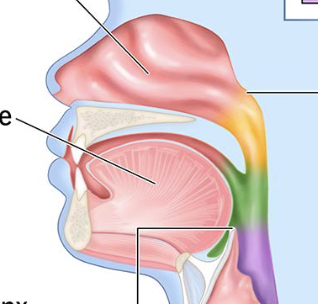
nasopharynx
the upper part of the pharynx connecting with the nasal cavity above the soft palate
blue
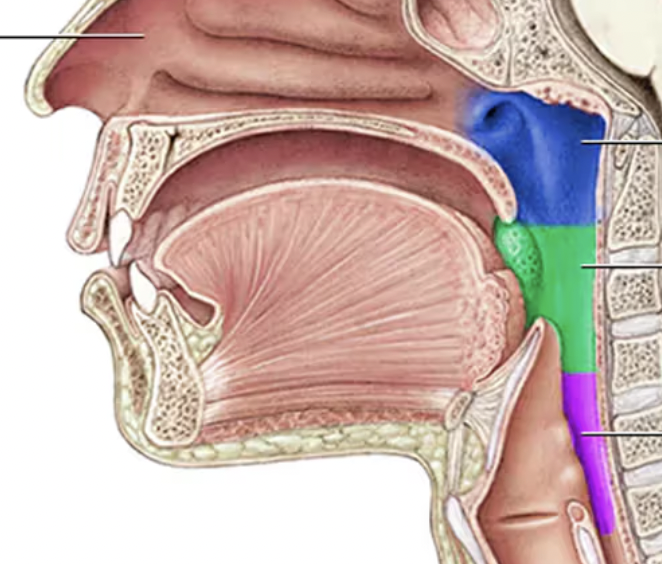
oropharynx
the middle part of the throat, behind the mouth
green
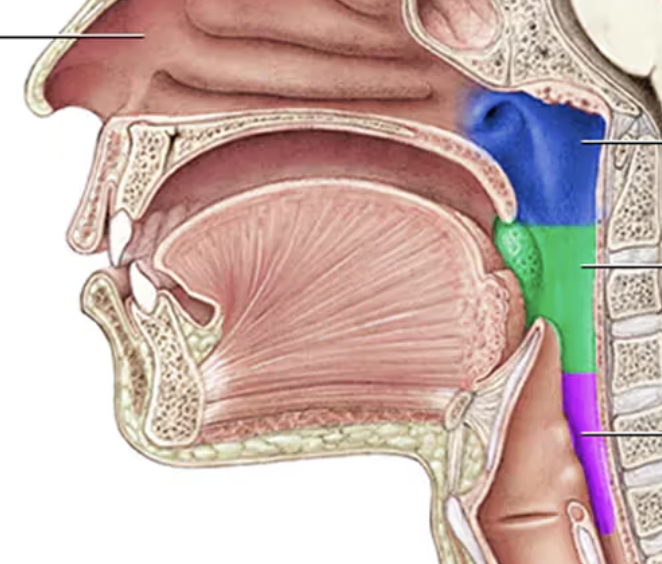
laryngopharynx/hypopharynx
the most caudal portion of the pharynx, below the epiglottis and above the esophagus and trachea
purple
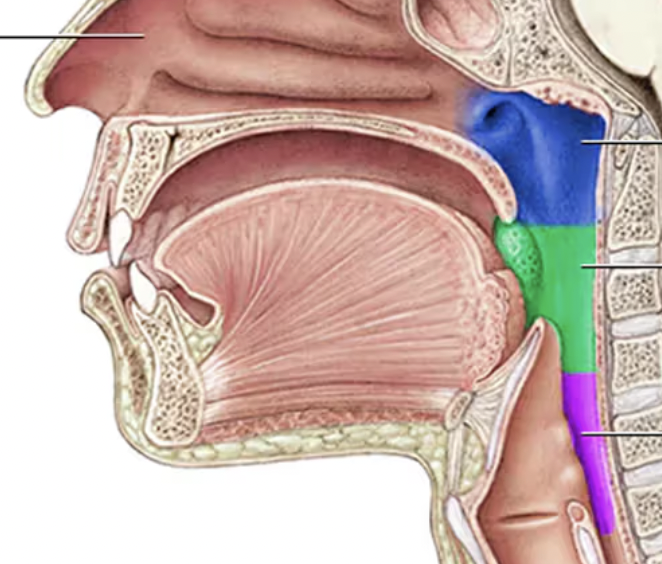
velopharyngeal opening
the space between soft palate and pharyngeal wall (non-nasal sounds)
regulates airflow and sound between the oral and nasal cavities during speech and swallowing
velopharyngeal closure
is crucial for articulation (differentiating oral and nasal sounds) and swallowing
movement of the soft palate and pharyngeal walls
oral consonants/sounds
non-nasal sounds: all other consonants like stop (/p/, /t/), fricative (/s/, ‘sh’)
VP port is closed (sounds that pass through the oral cavity)
raise velum
air flow is directed through the mouth/oral cavity
nasal consonants/sounds
/m/, /n/, and ‘ng’
VP port opens (sounds that pass through the nasal cavity)
lowered velum
send air through the nose